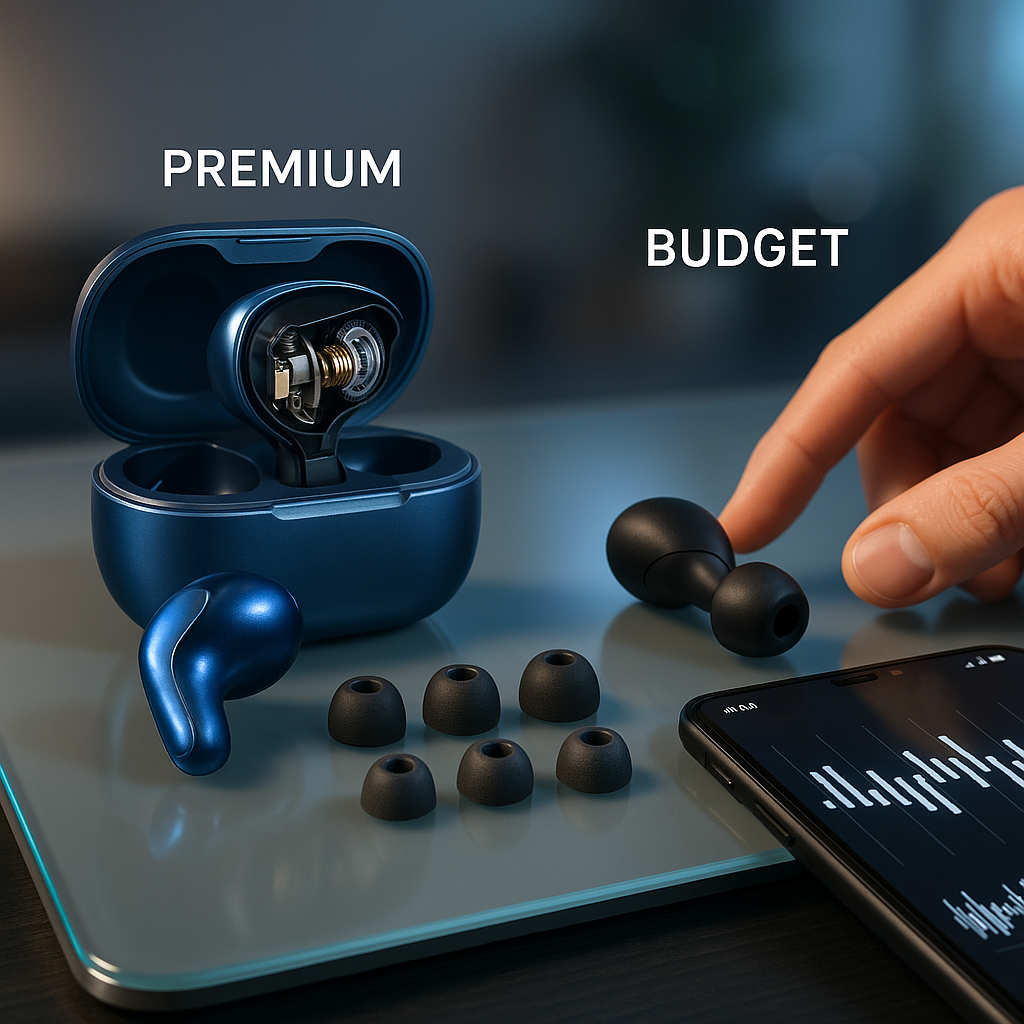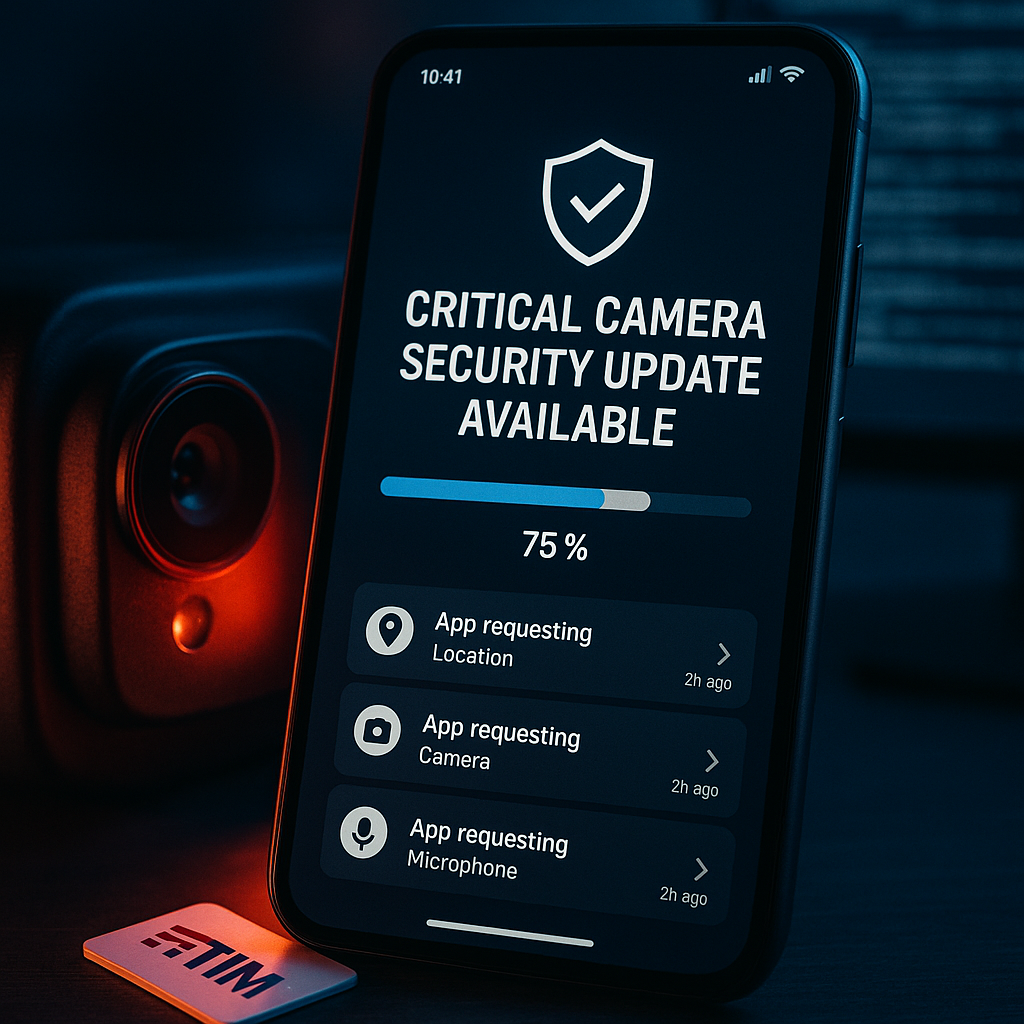Key Takeaways
- Sound quality isn’t only for audiophiles anymore: Premium earbuds still take the lead with richer bass and detailed clarity, but many budget models now deliver impressively balanced sound suitable for everyday listeners across multiple settings, from commuting to working out.
- Value drives buying decisions over niche features: In 2025, most shoppers prioritize overall value and reliability for their price point instead of hunting down ultra-specific features. This shift makes balanced offerings and robustness essential differentiators for any brand.
- Comfort and customizable fit matter across all price points: Earbud designs have improved remarkably for both budget and premium categories. Ergonomic shapes, multiple ear tip options, and lighter builds are now expected, ensuring comfortable, prolonged use whether you’re in the office, at the gym, or on a flight.
- Noise cancellation sets the real premium edge: Active Noise Cancellation (ANC) continues to distinguish top-tier earbuds. While budget models now provide better passive isolation, mid-range and premium models are closing in with robust active solutions that enhance listening in busy environments.
- Battery life sets the pace for all-day listening: Multi-day battery life is now common even in budget earbuds, with smaller cases offering extended usage. Premium offerings push further with rapid charging and impressive total endurance. Consider your routine (travel, work, exercise) to determine your battery needs.
- Connectivity smarts define user convenience: Premium earbuds excel at seamless multipoint pairing and advanced Bluetooth stability, making switching between devices painless. Meanwhile, budget options have notably improved in maintaining stable connections and supporting the latest codecs.
- Extra features should add real value: High-end models now include perks like wireless charging cases, adaptive EQ, in-ear detection, and superior build quality. Weigh these additions against your genuine needs to find the right balance between spending and satisfaction.
Understanding the actual differences and overlaps between budget and premium earbuds in 2025 empowers you to make a smarter, satisfaction-focused purchase. Whether you’re striving for cutting-edge specs or reliable everyday value, the insights below will guide you through side-by-side audio comparisons, feature breakdowns, and TechSensei’s top recommendations across every price tier.
Introduction
Choosing the best earbuds in 2025 goes beyond paying a premium for superior audio. Modern budget models have rapidly advanced, often rivaling their high-end counterparts in critical areas such as sound performance, comfort, and device compatibility. Whether you’re a seasoned commuter, fitness enthusiast, or remote worker, there’s an option tailored for your needs—no matter your budget.
Wireless earbuds today offer high-fidelity sound, extended battery life, adaptive noise cancellation, and ergonomic builds across various price ranges. As the line between budget and premium earbuds continues to blur, it is increasingly important to focus on your listening habits and actual requirements. This comprehensive guide details the core differences and common ground between pricing tiers, presents comparative audio data, and highlights the best earbuds available in 2025 for every user. Let’s explore the key features, sound qualities, and durability benchmarks that truly matter.
Understanding Price Tiers and Value Propositions
Assessing earbuds in 2025 starts with understanding how each price tier stacks up in terms of features, reliability, and long-term value. A variety of factors—from sound technology to connectivity—contribute to the overall experience, and these factors differ notably by segment.
Un passo avanti. Sempre.
Unisciti al nostro canale Telegram per ricevere
aggiornamenti mirati, notizie selezionate e contenuti che fanno davvero la differenza.
Zero distrazioni, solo ciò che conta.
 Entra nel Canale
Entra nel Canale
Entry-Level Budget Segment ($20-50)
Entry-level earbuds have made significant leaps in 2025, making high-quality wireless audio more accessible than ever. For consumers who prioritize affordability, these models deliver essential features with decent performance, ideal for casual music listeners, students, or as backup pairs.
Common characteristics in this price tier include:
- Basic dynamic drivers (typically 8-10mm) for satisfactory bass and mids
- Water resistance (IPX4-IPX5 ratings) that holds up for outdoor use or exercise
- Battery life around 4-6 hours per charge, with a compact case offering extra cycles
- Basic, reliable Bluetooth 5.2 for solid connectivity with most devices
- Fundamental tap or button controls
- Omission of advanced features like companion apps and customizable EQ
Recent advancements include enhanced driver construction and more dependable connections, but sound clarity remains relatively simple compared to higher tiers. Typical models may not excel in environments with high ambient noise, yet they offer great value for essentials.
Mid-Range Sweet Spot ($50-150)
The mid-range category is where most users will find the sweet spot of advanced features without breaking the bank. In 2025, this segment offers features that just a year or two ago were reserved for the premium market.
Standout features for this tier:
- Hybrid driver configurations that improve both bass punch and treble clarity
- Active Noise Cancellation with meaningful reductions of -20 to -25dB, suitable for commuting or offices
- 6-8 hours per charge, even with ANC enabled, with robust charging cases
- Wireless charging capability for added convenience
- Access to advanced audio codecs (like AAC and aptX)
- Basic companion app support for EQ tweaks and firmware updates
These upgrades make mid-range earbuds highly competitive for daily use, whether you’re traveling, running, or working remotely. The value proposition is further enhanced by the inclusion of semi-premium build materials and comfortable, versatile fit options.
Premium Territory ($150-300)
Premium earbuds justify their price through remarkable engineering and a broad array of smart features. As of 2025, premium models deliver exceptional performance in almost every category, making them a go-to for audiophiles, frequent travelers, and professionals.
Defining features include:
- Multi-driver arrays with advanced balanced armature technology for detailed audio separation and fidelity
- State-of-the-art ANC with -30 to -35dB reduction, excelling in noisy settings like airplanes or city streets
- Adaptive EQ and sound profiles that customize the listening experience to your preferences and environment
- 8-10 hours of runtime per charge with active noise cancellation active, and fast charging solutions
- Deep integration with comprehensive mobile apps offering granular sound controls, firmware updates, and analytic insights
Premium earbuds also often feature water and sweat resistance, improved call quality, and thoughtful extras like in-ear detection and responsive touch/gesture controls.
Ultra-Premium Segment ($300+)
The ultra-premium segment sits at the edge of innovation, offering truly best-in-class features, though with rapidly diminishing returns in everyday use. These models cater to professionals who demand uncompromised audio, musicians, or those seeking status symbols.
Notable characteristics:
- Custom-engineered drivers built with exotic materials (titanium, ceramic) for pristine sound accuracy
- AI-powered adaptive noise cancellation capable of -35 to -40dB reductions
- Immersive spatial audio with advanced head-tracking and room simulation
- Top-tier build quality with luxurious materials for design enthusiasts
- Support for the latest and greatest Bluetooth codecs, including LDAC and LC3plus, enabling ultra-high-resolution wireless streaming
While these earbuds are technological marvels, most everyday users will find better overall value lower on the price ladder.
Technical Performance Analysis
A closer look at in-depth audio performance and technical features helps differentiate what you’re paying for, especially as specs increasingly overlap between budget and premium models.
Sound Quality Metrics
Earbud performance can be objectively measured in several key areas:
Frequency Response Accuracy:
- Budget: Tends to have a ±6-8dB deviation, making the sound more colored and less precise.
- Mid-range: Improves with ±4-6dB deviation for truer representation.
- Premium: Strives for ±2-4dB deviation, achieving balanced highs, mids, and lows.
- Ultra-premium: Exceptional ±1-3dB deviation, offering studio-like clarity.
Driver Technology Impact:
Un passo avanti. Sempre.
Unisciti al nostro canale Telegram per ricevere
aggiornamenti mirati, notizie selezionate e contenuti che fanno davvero la differenza.
Zero distrazioni, solo ciò che conta.
 Entra nel Canale
Entra nel Canale
- Entry-level: Single dynamic drivers provide basic sound reproduction.
- Mid-range: Introduction of hybrid drivers improves dynamic range and clarity.
- Premium: Multi-driver arrays layer audio frequencies, simulating a much richer listening experience.
- Ultra-premium: Custom solutions unlock accuracy and realism comparable to professional monitors.
Noise Cancellation Capabilities
Noise isolation capability is a defining feature as you move up the tiers:
Measured Noise Reduction:
- Budget ANC: 15-20dB (usually only effective for steady noises)
- Mid-range: 20-25dB (cancels most low-frequency distractions)
- Premium: 25-35dB (significantly reduces both low and mid-frequency noise)
- Ultra-premium: 35-40dB (virtually silent backgrounds, enhanced by AI adaptation)
Connectivity and Codec Support
Smooth pairing and audio transmission make a huge difference, particularly for mobile and multi-device setups:
Bluetooth Implementation:
- Budget: Bluetooth 5.2 with basic SBC codec support; stable but limited by bandwidth
- Mid-range: Bluetooth 5.3, supporting AAC and aptX for higher-quality streaming across devices including smartphones and tablets
- Premium: Bluetooth 5.3 with enhancements like aptX Adaptive and LDAC for high-fidelity, low-latency listening
- Ultra-premium: Comprehensive codec suite (including LC3plus), ensuring top compatibility and best-in-class streaming for laptops, tablets, and smartwatches
Feature Set Comparison
The user experience is shaped by a mix of essential and advanced features.
Essential Features Across Tiers
Touch Controls:
- Budget: Basic tap-to-play, skip, or answer calls
- Mid-range: Customizable controls through a companion app
- Premium: Gesture recognition and multi-function support
- Ultra-premium: Adaptive touch sensitivity, recognizing intent and environment
Battery Performance:
- Budget: 4-6 hours of playback, with an additional 12-18 hours from the charging case
- Mid-range: 6-8 hours per charge, plus up to 24 hours from a larger charging case
- Premium: 8-10 hours plus 30 more from the case, with rapid charge support
- Ultra-premium: 10-12 hours with 36 additional hours, keeping pace with even the longest days
Advanced Features and Innovation
AI Integration:
- Budget: Basic voice assistant triggers (Siri, Google Assistant)
- Mid-range: Expanded voice command options (volume, track change, battery check)
- Premium: Context-aware audio, automatically tuning settings for conversations or walking
- Ultra-premium: Predictive adjustments based on listening habits and environmental cues
Companion App Capabilities:
- Budget: Minimal or absent
- Mid-range: Simple EQ and remapping controls
- Premium: Deep customization, including EQ presets, ANC adjustment, real-time audio analysis
- Ultra-premium: Professional-grade sound shaping, calibration tools, and even integration with streaming service settings
Real-World Performance Assessment
How these specs translate into daily life matters most to end users.
Durability and Build Quality
Earbud construction impacts both longevity and user satisfaction, especially for those in active or outdoor roles.
Materials and Design:
- Budget: Utilitarian plastic, color variations, basic water resistance
- Mid-range: Upgrade to more robust plastics, reinforced cables, and tighter seams for water and sweat resistance
- Premium: Mixtures of premium plastics and light metals, superior durability, and a refined feel
- Ultra-premium: Exotic materials such as titanium or ceramic, maximizing aesthetics as much as strength
Comfort and Fit
Comfort is critical, particularly for users who spend hours in meetings, classrooms, or on the go.
Fit Options:
- Budget: Standard tip sizes (small/medium/large), may lack soft or memory-foam options
- Mid-range: Additional tip shapes for various ear canals, sometimes including foam for improved seal
- Premium: Multiple materials (silicone, memory foam) and ergonomic contouring
- Ultra-premium: Custom-molded or digitally scanned fit, ensuring the best support for professional and audiophile needs
Value Analysis and Recommendations
Price-to-Performance Ratio
The relationship between cost, features, and actual performance shapes real value.
Cost vs. Feature Analysis:
- Budget: Excellent for basic needs and backup uses; minimal investment for reliable audio
- Mid-range: The most competitive ratio, with substantial features at an accessible price
- Premium: Robust features and futureproofing, though benefits over mid-range begin to narrow
- Ultra-premium: Direct appeal to audio purists and professionals; diminishing returns on daily user value
Use Case Optimization
Matching the right earbuds to lifestyle needs maximizes satisfaction and longevity.
Best Applications by Tier:
- Budget: Everyday background listening, student use, or as a travel backup
- Mid-range: Commuting, gym sessions, virtual meetings, or gaming with friends
- Premium: Audiophile-grade listening, international travel, executive settings, or content creation
- Ultra-premium: Critical studio work, professional monitoring, or those seeking the absolute peak of wireless tech
Across different sectors (such as educators prioritizing all-day comfort, healthcare workers demanding reliable in-ear notifications, or marketers needing crisp, clear call quality), the right pairing can transform the audio experience.
Conclusion
The wireless earbud landscape in 2025 has never been richer or more dynamic, spanning a broad range of capabilities from entry-level reliability to ultra-premium innovation. Each price tier is finely tuned to distinct usage scenarios and user expectations, ensuring there’s an ideal choice whether you value budget pragmatism, advanced listening customization, or next-level audio technology.
Notably, technical advancements like improved active noise cancellation, customizable EQ, and expanded codec support are no longer exclusive to the upper tier. Mid-range models are benefitting from feature trickle-down, making premium performance more accessible. Yet, the ultra-premium segment continues to push boundaries, driving the industry (and user experience) forward.
Looking to the future, it is clear that those who weigh features against authentic needs and focus on how technical specs translate into real-world usability will derive the most satisfaction from their choices. As creative industries, education, healthcare, and everyday users demand even more from portable audio, the true winners will be brands and buyers who prioritize clarity, adaptability, and user-centric design.
The next frontier in wireless audio will bring even more integration with personal tech ecosystems, smarter context-aware features, and greater influence from AI and machine learning. The real opportunity is not just in owning the latest earbuds, but in understanding them. That’s really the key to ensuring every listening moment is both effortless and extraordinary. In this fast-moving market, those who stay informed and adaptable will always have the competitive edge—and of course, the musical one too.





Leave a Reply